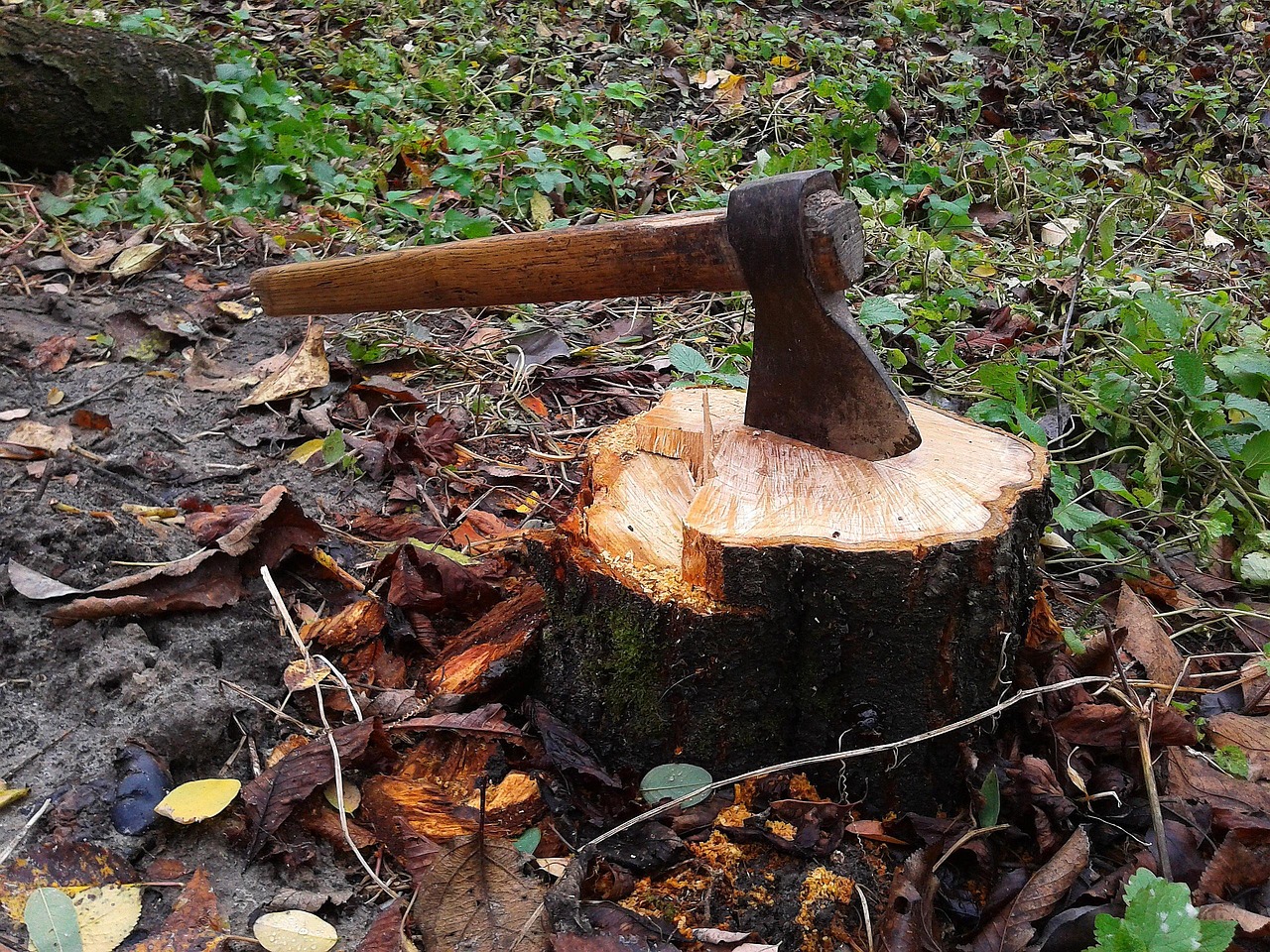The phrase “The axe forgets, the tree remembers” philosophically highlights the disparity between the experiences of those who inflict harm and those who endure it. It suggests that while the aggressor may move on, the victim carries the lasting emotional scars.
Understanding the Phrase
This saying originates from African folklore. It symbolizes the enduring impact of trauma and suffering on individuals. While the axe represents the perpetrator, the tree symbolizes the victim. The axe can be seen as an object that fulfills its purpose without any emotional attachment, forgetting its actions quickly. In contrast, the tree bears the marks and memories of what was inflicted upon it.

Philosophically, this phrase encourages reflection on the consequences of our actions. It emphasizes empathy and understanding towards those who have suffered. The emotional resonance tied to experiences of pain and loss is often overlooked by those who have not endured similar hardships.
The Emotional Impact of Trauma
Trauma has a profound effect on individuals, shaping their perceptions, behaviors, and emotional health. Recognizing this impact is crucial in fostering compassion and support for those who have been affected. Here are some key points regarding trauma:
- Long-lasting Effects: Trauma can lead to psychological issues such as anxiety and depression.
- Memory and Recall: Trauma often alters memories, making it difficult for victims to process their experiences.
- Isolation: Victims may feel alone in their suffering, which can exacerbate their pain.
- Resilience: Many individuals display incredible strength in overcoming trauma, yet the scars remain.
The Role of Empathy
Empathy plays a vital role in addressing the disparities between the experiences of the axe and the tree. Understanding that each person carries their own burdens can foster a more compassionate society. Here are some aspects of empathy related to this phrase:

- Active Listening: Hearing someone’s story can validate their feelings and experiences.
- Support Systems: Building networks of support helps victims feel understood and less isolated.
- Awareness: Raising awareness about trauma encourages conversations around mental health and healing.
Historical Context
The phrase “The axe forgets, the tree remembers” has roots in various cultures, often highlighting themes of justice, memory, and resilience. Understanding its historical context can deepen our appreciation for its meaning. Here are some examples:
| Cultural Context | Significance |
|---|---|
| African Folklore | Emphasizes communal memory and the importance of recognizing history. |
| Indigenous Wisdom | Highlights interconnectedness and respect for all living beings. |
| Modern Psychology | Focuses on trauma-informed care and understanding victim experiences. |
The relevance of this phrase transcends cultural boundaries. It serves as a reminder that while some may forget their role in causing pain, the memories and impacts remain with those who suffered. This understanding can lead to more meaningful conversations about healing and reconciliation.
Applications in Modern Society
The philosophical implications of “The axe forgets, the tree remembers” resonate in various domains today. From personal relationships to broader societal issues, acknowledging this truth can promote healing and understanding. Here are some areas where this philosophy is particularly relevant:

- Mental Health Advocacy: Promoting awareness around mental health can help reduce stigma associated with trauma.
- Conflict Resolution: Recognizing past grievances can lead to more effective reconciliation efforts.
- Education: Incorporating discussions about empathy and trauma into educational curriculums can foster a more compassionate generation.
This phrase encourages us to reflect on our actions and their potential impact on others. By understanding that while we may forget our role in someone else’s pain, they may carry that memory forever, we can cultivate a more empathetic world.
The Psychological Dimensions of Memory and Trauma
Memory plays a crucial role in how individuals process and cope with trauma. The phrase “The axe forgets, the tree remembers” speaks to the deep psychological scars that can linger long after the initial harm has been inflicted. Understanding these psychological dimensions is essential for fostering empathy and creating supportive environments for healing.
The Nature of Memory
Memory is not merely a passive recording of events; it is an active process that shapes our identities and influences our behaviors. Here are some important aspects of memory:

- Emotional Memory: Emotions tied to memories can enhance their vividness and make them more impactful. Traumatic events often evoke strong emotional responses, which can make those memories more difficult to process.
- Flashbacks: Victims of trauma may experience flashbacks, where they relive the traumatic event as if it is happening again. This can lead to heightened anxiety and distress.
- Memory Suppression: Some individuals may attempt to suppress painful memories, leading to disconnection from their experiences and emotions.
Trauma and Its Effects on the Brain
Research has shown that trauma can alter brain function and structure. Understanding these changes can help in developing effective therapeutic approaches. Key findings include:
| Brain Area | Effect of Trauma |
|---|---|
| Hippocampus | Often reduced in size, affecting memory and learning. |
| Amygdala | Heightened activity, leading to increased fear responses. |
| Prefrontal Cortex | Decreased function, impacting decision-making and emotional regulation. |
The changes in brain function highlight why victims of trauma may struggle with memory processing, emotional regulation, and overall mental health.
Cultural Perspectives on Trauma and Healing
Different cultures have unique approaches to understanding trauma and healing. These perspectives can provide valuable insights into the effects of harm and the importance of collective memory. Here are some notable cultural viewpoints:
Indigenous Practices
Many Indigenous cultures view trauma through the lens of community and connection. Healing practices often involve:
- Storytelling: Sharing personal stories can create community bonds and facilitate healing.
- Ceremonial Practices: Rituals and ceremonies often play a crucial role in processing grief and trauma collectively.
- Connection to Nature: Nature is often seen as a source of healing, emphasizing the interconnectedness of all living beings.
Western Approaches
In Western societies, trauma is often addressed through clinical methods such as therapy and medication. Common approaches include:
- Cognitive Behavioral Therapy (CBT): Helps individuals recognize and change negative thought patterns associated with trauma.
- Exposure Therapy: Gradually exposes individuals to memories or situations related to their trauma to reduce fear responses.
- Mindfulness Practices: Techniques such as meditation can help increase awareness of emotions and promote calmness.
The Importance of Collective Memory
The concept of collective memory refers to how groups remember shared experiences, especially traumatic ones. This idea plays a significant role in shaping cultural identities. Collective memory can aid in:
- Community Resilience: Shared understanding of past traumas can foster unity and strength among group members.
- Historical Awareness: Acknowledging collective experiences encourages learning from history to prevent future harm.
- Cultural Preservation: Maintaining narratives about trauma helps preserve the identity and experiences of marginalized communities.
Recognizing the significance of collective memory allows individuals and communities to validate their experiences, fostering healing on both personal and communal levels.
Empathy as a Tool for Healing
Empathy emerges as a powerful tool in addressing the disparities highlighted by “The axe forgets, the tree remembers.” Understanding another’s pain not only fosters connection but also initiates pathways toward healing. Here are some ways empathy can facilitate recovery:
- Encouraging Dialogue: Open conversations about trauma can help validate experiences and reduce feelings of isolation.
- Creating Safe Spaces: Providing environments where individuals feel safe to express their emotions can enhance healing processes.
- Psychoeducation: Teaching others about the effects of trauma promotes greater understanding and support among peers.
This empathetic approach underscores the importance of recognizing both individual struggles and collective histories, bridging the gap between the experiences of the axe and the tree.
Philosophical Implications of Memory and Trauma
The phrase “The axe forgets, the tree remembers” serves as a profound reminder of the philosophical implications of memory and trauma. It encourages us to reflect on the nature of suffering, the weight of memories, and the ethical responsibilities we hold towards one another. Exploring these philosophical dimensions can offer deeper insights into the human experience.
The Nature of Suffering
Suffering is a universal experience that shapes human existence. It can manifest in various forms, including physical pain, emotional distress, and psychological trauma. Understanding suffering through a philosophical lens allows us to grasp its complexities:
- Existential Reflection: Many philosophers, such as Friedrich Nietzsche and Jean-Paul Sartre, have explored the role of suffering in personal growth and existential meaning. They argue that confronting suffering can lead to deeper self-awareness and authenticity.
- Empathy and Altruism: Suffering often evokes empathy in others, prompting altruistic behavior. Recognizing someone else’s pain can inspire individuals to act compassionately.
- Social Responsibility: Acknowledging collective suffering raises questions about social justice and ethical obligations to address systemic issues that perpetuate harm.
The Weight of Memory
Memory is not just a recollection of past events; it shapes our identities and influences our future actions. Philosophers like Henri Bergson and Martin Heidegger have examined the relationship between memory and existence. Key points include:
- Memory and Identity: Our memories contribute significantly to our sense of self. Traumatic memories can alter one’s identity, often leading to a disconnection between past experiences and present reality.
- Collective vs. Individual Memory: Collective memory refers to shared experiences within a community, while individual memory pertains to personal recollections. Both are vital in shaping cultural narratives and identities.
- Ethics of Remembering: Philosophically, the act of remembering raises ethical questions about whose memories are valued and how they are preserved or forgotten.
The Role of Forgiveness in Healing
Forgiveness is a complex concept that can play a significant role in healing from trauma. The ability to forgive does not negate the pain experienced but offers a pathway to reclaiming one’s life. Here are some critical aspects of forgiveness:
The Nature of Forgiveness
Forgiveness can be understood through various philosophical lenses. It involves letting go of resentment while acknowledging the hurt experienced. Key elements include:
- Personal Liberation: Forgiveness can free individuals from the burden of anger and resentment, allowing them to move forward in their lives.
- Restorative Justice: In some cultures, forgiveness is a cornerstone of restorative justice practices, emphasizing healing for both victims and offenders.
- Empathy and Understanding: The process of forgiveness often requires empathy towards the offender, recognizing their humanity despite their actions.
Challenges of Forgiveness
While forgiveness can be beneficial, it is not always straightforward. Challenges include:
- Emotional Complexity: Victims may struggle with feelings of betrayal and anger, making forgiveness difficult.
- Cultural Perspectives: Different cultures have varying views on forgiveness, influencing how individuals approach the concept.
- Time and Process: Forgiveness is often a gradual process that may require significant time and reflection.
Trauma-Informed Approaches in Society
A trauma-informed approach recognizes the widespread impact of trauma and emphasizes understanding its effects on individuals and communities. This perspective is essential in various fields, including healthcare, education, and social services. Key principles include:
- Safety: Ensuring physical and emotional safety for individuals is critical in creating supportive environments.
- Trustworthiness: Building trust through transparency and consistency helps individuals feel secure in sharing their experiences.
- Empowerment: Encouraging autonomy and decision-making fosters resilience among individuals who have experienced trauma.
Implementing Trauma-Informed Practices
Implementing trauma-informed practices requires a shift in perspective across various sectors. Here are some strategies:
| Sector | Strategies for Trauma-Informed Practices |
|---|---|
| Healthcare | Training providers to recognize signs of trauma and integrating trauma-informed care into treatment plans. |
| Education | Cultivating supportive classroom environments that promote emotional well-being and understanding among students. |
| Social Services | Implementing policies that prioritize client safety and empowerment in service delivery. |
A trauma-informed approach not only benefits those who have experienced trauma but also creates healthier communities by fostering understanding and compassion.
The Interconnectedness of Trauma and Healing
Understanding the phrase “The axe forgets, the tree remembers” philosophically encourages a deeper exploration of the interconnectedness of trauma and healing. This phrase serves as a reminder that while the perpetrators of harm may move on, the victims carry the memories and impacts of their experiences. Acknowledging this reality is essential in fostering a more compassionate society.
In addressing the complexities of trauma, it is crucial to recognize how individual experiences can influence broader social dynamics. For instance, when survivors share their stories, they validate their experiences and contribute to a collective understanding of trauma. This sharing can also empower others who have faced similar circumstances, creating a supportive network where healing can occur.
The Importance of Storytelling
Storytelling emerges as a powerful tool for healing and understanding. It allows individuals to articulate their experiences and fosters connections with others. The impact of storytelling can be seen in various contexts:
- Personal Narratives: Sharing personal stories can help survivors process their trauma, enabling them to reclaim their narratives and identities.
- Cultural Transmission: Stories passed down through generations can preserve collective memories and cultural identities, emphasizing the importance of remembrance.
- Social Change: Storytelling has the potential to challenge societal norms and injustices, inspiring movements for change and healing.
Community Support and Healing
The role of community support in healing from trauma cannot be overstated. Social connections can provide essential emotional and psychological support for individuals who have experienced harm. Here are some ways community can facilitate healing:
- Peer Support Groups: These groups create safe spaces for individuals to share experiences, offering validation and understanding.
- Community Resources: Access to counseling, workshops, and educational programs can empower individuals to heal and grow.
- Advocacy: Communities can advocate for systemic changes that address the root causes of trauma and improve support services.
Final Thoughts
The philosophical implications of “The axe forgets, the tree remembers” resonate deeply within our understanding of trauma, memory, and healing. This phrase serves as a poignant reminder that while some may forget their role in causing pain, the memories endure for those who have suffered. As we navigate our collective human experience, it becomes increasingly important to foster empathy, understanding, and support for those impacted by trauma.
Acknowledging the lasting effects of trauma encourages us to engage in open dialogues about mental health and emotional well-being. By creating spaces where individuals feel safe to share their stories, we honor their experiences and pave the way for healing. Moreover, promoting trauma-informed practices across various sectors can lead to healthier communities where compassion and understanding thrive.
Ultimately, the journey towards healing is a shared one. By recognizing the interconnectedness of our experiences, we can foster a more inclusive society that values empathy and compassion. The lessons embedded in the phrase “The axe forgets, the tree remembers” compel us to reflect not only on our actions but also on our responsibilities to one another as we navigate the complexities of life together.
